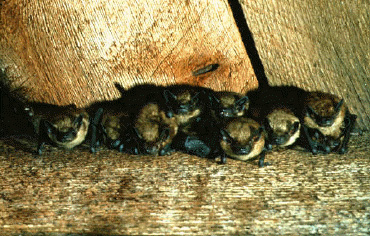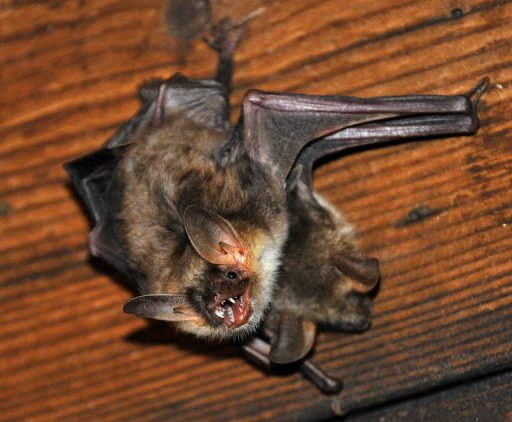
Hi my name is Brendan Mangnitz and I am the owner of 24/7 Wildlife Control. I have been in business now on my own for nearly five years and I have been in this industry for close to 10 years working with friends, family and other companies while learning, training and understanding the wildlife removal & nuisance animal control industry. I started off by graduating from the University of South Florida with my Business Management degree. After this degree I got into the field of wildlife control because I knew there was a big issue with bats getting into people's residences and I realized that there are not many professional bat removal companies. I wanted to be one of the most professional bat removal companies and bat trapping companies out there. You want to hire professional and honest bat removal and bat trapper that is properly licensed, insured, bonded, has workers comp, but additionally you want to hire bat removal companies and bat trappers that show up in uniforms, have wonderful customer service, have clean trucks and respect both of you and the animals like the bats being trapped. We treat our animals in a humane way.

Living Safely With Bats
Even though bats sometimes spread illnesses to individuals, they are able to quietly co-exist with others and offer us many benefits.
Worldwide, bats are a major predator of night-flying bugs, like unwanted pests that cost farm owners enormous amounts of dollars yearly. Throughout the tropics, seed dispersal and pollination actions by bats are vital to rainforest success. In summary, research of bats have provided to healthcare developments with studies such as the development of navigational helps for the sightless. Unfortunately, many regional communities of bats have been damaged and many varieties are now vulnerable.
The best protection we can offer these unique critters is to understand more about their habits and identify the value of just residing safely with them.
identify the value of just residing safely with them.
Benefits of Bats:
The Earth without bats would be a very different and much lesser place. More than 1,300 types of bats around the world are playing environmental positions that are necessary to the health of organic environments and human financial systems.
Many of the more than 1,300 bat types eat huge bugs, some of the most destructive unwanted pests. Others pollinate many useful vegetation, guaranteeing the production of vegetables and fruits that support regional financial systems, as well as different animal areas. Fruit-eating bats in the tropics spread plant seeds that are crucial to repairing eliminated or broken jungles. Even bat excrement (called guano) is useful as a rich organic manure. Guano is a major organic resource globally, and, when excavated sensibly with bats in mind, it can offer significant financial benefits for landowners and native neighborhoods.
Bats are often considered a “keystone species” and they are essential to some exotic and wasteland environments. Without bats’ pollination and seed-dispersing services, regional environments could progressively fail as vegetation won’t succeed to give meals and canopy for wild creatures near the base of the crops sequence. Consider the truly amazing baobab shrub of the Eastern Africa savannah. It is so crucial to the success of so many crazy types that it is often known as the “African Tree of Life.” Yet this will depend almost specifically on bats for pollination. Without bats, the Tree of Life could die out.

Insectivorous bats feed primarily on night-flying bugs, and many very destructive unwanted pests are on their radar. Pregnant or nursing moms of some bat types will eat up to their body weight in bugs each evening.
The large numbers of Spanish Free-Tailed Bats at BCI’s Bracken Cavern in Main Florida eat a lot of bugs each summer evening. And a favorite target in the U.S. and South America is an especially destructive insect known as the Maize Earworm Moth (aka pure cotton bollworm, tomato fruitworm, etc.) that strikes many farming vegetation from artichokes to watermelons. Worldwide plants harmed from this moth are approximated at more than $1 billion dollars a season, and research in 2006 determined that freetails save pure cotton farm owners in South-Central Florida more than $740,000 yearly. Throughout the U.S. researchers calculate, bats are valuable more than $3.7 billion dollars a season in reduced plants harmed and pest management costs. And that, of course, means less bug sprays enter the environment.
From deserts to jungles, nectar-feeding bats are crucial pollinators for a wide range of vegetation of excellent financial and environmental value. In North American deserts, massive cactus and agave rely on bats for pollination, while exotic bats pollinate amazing numbers of vegetation.
Most blooming vegetation cannot produce plant seeds and vegetables and fruits without pollination – the operation of moving plant pollen grain from the male portion of the plant (the stamen) to the female aspect (the pistil). This technique also enhances the inherited variety of cross-pollinated vegetation. Bats that drink the lovely nectar inside blossoms pick up a cleaning of plant pollen and move it along to other blossoms as they nourish.
A few of the professional products that rely on bat pollinators for crazy or harvested types include: apples, peach masks, durian, cloves, carob, balsa wood, and agave. Find out more - six fast fact about pollinating bats!
Vast areas of the world’s jungles are eliminated yearly for signing, farming, ranching and other uses. Fruit-eating bats are key players in repairing those important jungles. Bats are so effective at spreading plant seeds into ravaged forestlands that they’ve been known as the “farmers of the tropics.”
Regenerating clear-cut jungles is a complicated organic procedure, one that requires seed-scattering by wild birds, primates and other creatures as well as bats. But wild birds are careful of traversing huge, open areas where traveling predators can attack, so they generally drop plant seeds directly below their perches. Night-foraging vegetable and fruits bats, on the other hand, often protect huge ranges each evening, and they are quite willing to combination clearings and generally defecate in flight, spreading far more plant seeds than wild birds across eliminated areas.
Many of the bat-dispersed plant seeds are from sturdy innovator vegetation, the first to develop in the hot, dry conditions of clearings. As these vegetations develop, they deliver the protection that lets other, more sensitive vegetation take control. Seeds that came from bats can account for up to 95 percent of the first new growth. The innovator vegetation also offer protection and perches for wild birds and primates, so they can add even more, different plant seeds to the mix that can lead eventually to restored woodlands. Bats have been known for spreading the plant seeds of grapes, figs, and cashews - among many others.
If you think you are having an issue with bats in your attic and want to get an expert opinion on the sounds you are hearing, give me a call! My name is Brendan Mangnitz with 24/7 Wildlife Control and I am always available to help identify the sounds you hear, and I would be happy to send one of our technicians out to assist you.